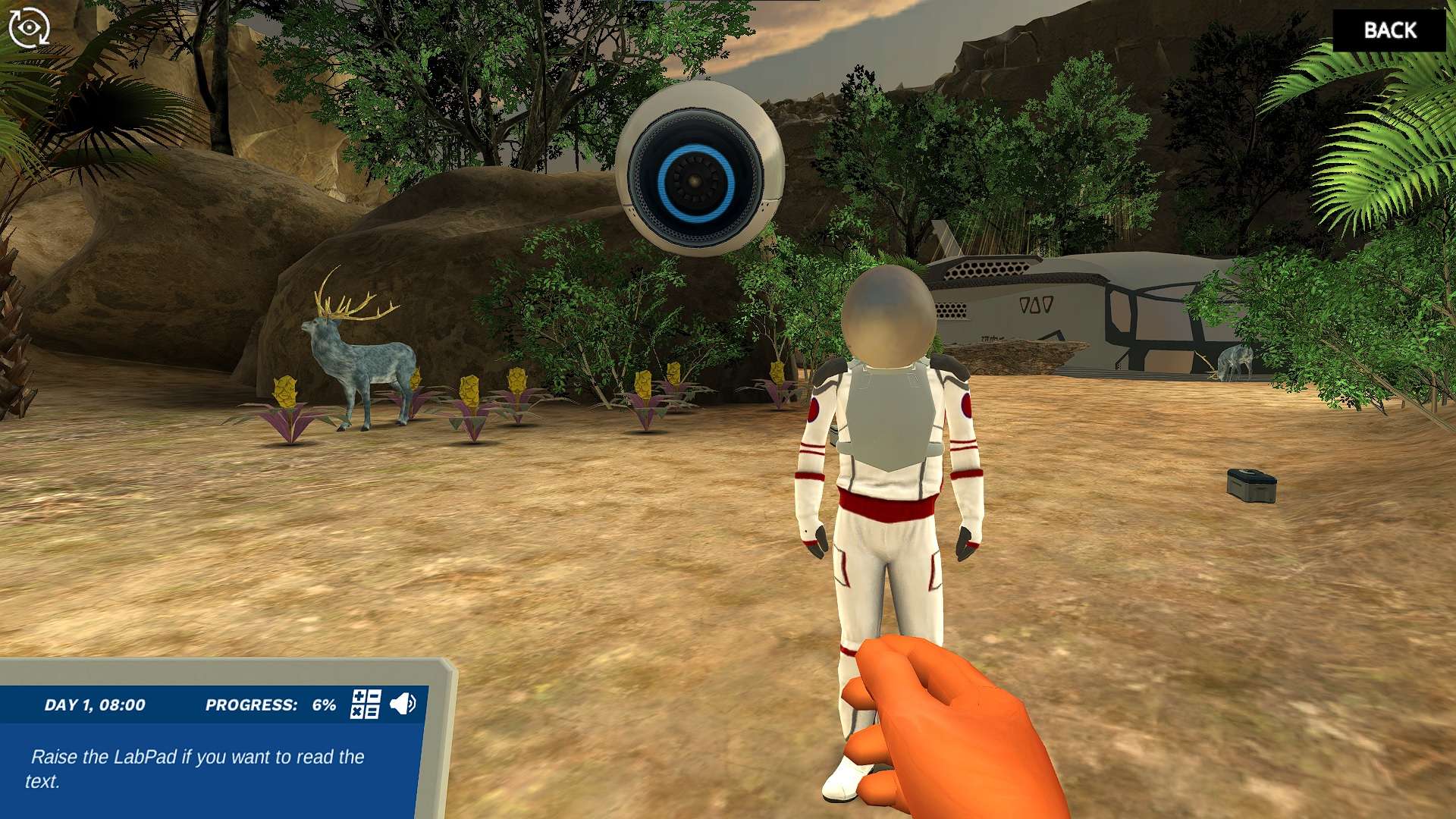Heading 1
Heading 2
Heading 3
Heading 4
Heading 5
Heading 6
Lorem ipsum dolor sit amet, consectetur adipiscing elit, sed do eiusmod tempor incididunt ut labore et dolore magna aliqua. Ut enim ad minim veniam, quis nostrud exercitation ullamco laboris nisi ut aliquip ex ea commodo consequat. Duis aute irure dolor in reprehenderit in voluptate velit esse cillum dolore eu fugiat nulla pariatur.
Block quote
Ordered list
- Item 1
- Item 2
- Item 3
Unordered list
- Item A
- Item B
- Item C
Bold text
Emphasis
Superscript
Subscript
About This Simulation
Find different mixtures on an alien planet and use your knowledge of mixtures and compounds to determine if they are safe to drink. Can you survive long enough to escape the planet?
Learning Objectives
- Describe the difference between a compound and a mixture
- Describe the difference between homogeneous and heterogeneous mixtures
- Recognize that the components of a mixture have different individual physical properties, compared to the physical properties of the mixture
About This Simulation
Lab Techniques
- Mixtures
Related Standards
- HS-PS1-1
Learn More About This Simulation
You have crash landed onto an alien world! In this simulation, you will need to learn about mixtures and compounds in order for you and your companion to survive. First, you will need to find a few mixtures you think you can drink. Then you need to determine if these mixtures are safe to drink already, or if they need some preparation.
Find homogeneous and heterogeneous mixtures
You might have crashed onto an alien world, but you still have high-tech equipment available to you. After finding three different mixtures, you will shrink down to the size of a molecule and enter a miniature spaceship called the shuttle scope. Travel between the mixtures in the shuttle scope and discover the differences between homogeneous and heterogeneous mixtures.
Compare mixtures and compounds
You will need to investigate what is in each mixture to learn if it is safe to drink. Luckily the shuttle scope has robot arms, and these can be used to push and pull the different compounds in your mixtures. Using the robot arms to experiment with your mixtures will help you to learn the key difference between compounds and mixtures. You’ll find out which mixtures are safe as you explore!
Which mixture can you drink?
After you journey in the shuttle scope, you will size back up to a regular size. With the knowledge you gained, you will now have a plan to make a drink that is safe for you and your companion. Will you and your companion survive and escape this mysterious planet?
For Science Programs Providing a Learning Advantage
Boost STEM Pass Rates
Boost Learning with Fun
75% of students show high engagement and improved grades with Labster
Discover Simulations That Match Your Syllabus
Easily bolster your learning objectives with relevant, interactive content
Place Students in the Shoes of Real Scientists
Practice a lab procedure or visualize theory through narrative-driven scenarios


FAQs
Find answers to frequently asked questions.
Heading 1
Heading 2
Heading 3
Heading 4
Heading 5
Heading 6
Lorem ipsum dolor sit amet, consectetur adipiscing elit, sed do eiusmod tempor incididunt ut labore et dolore magna aliqua. Ut enim ad minim veniam, quis nostrud exercitation ullamco laboris nisi ut aliquip ex ea commodo consequat. Duis aute irure dolor in reprehenderit in voluptate velit esse cillum dolore eu fugiat nulla pariatur.
Block quote
Ordered list
- Item 1
- Item 2
- Item 3
Unordered list
- Item A
- Item B
- Item C
Bold text
Emphasis
Superscript
Subscript
A Labster virtual lab is an interactive, multimedia assignment that students access right from their computers. Many Labster virtual labs prepare students for success in college by introducing foundational knowledge using multimedia visualizations that make it easier to understand complex concepts. Other Labster virtual labs prepare learners for careers in STEM labs by giving them realistic practice on lab techniques and procedures.
Labster’s virtual lab simulations are created by scientists and designed to maximize engagement and interactivity. Unlike watching a video or reading a textbook, Labster virtual labs are interactive. To make progress, students must think critically and solve a real-world problem. We believe that learning by doing makes STEM stick.
Yes, Labster is compatible with all major LMS (Learning Management Systems) including Blackboard, Canvas, D2L, Moodle, and many others. Students can access Labster like any other assignment. If your institution does not choose an LMS integration, students will log into Labster’s Course Manager once they have an account created. Your institution will decide which is the best access method.
Labster is available for purchase by instructors, faculty, and administrators at education institutions. Purchasing our starter package, Labster Explorer, can be done using a credit card if you are located in the USA, Canada, or Mexico. If you are outside of North America or are choosing a higher plan, please speak with a Labster sales representative. Compare plans.
Labster supports a wide range of STEM courses at the high school, college, and university level across fields in biology, chemistry, physics, and health sciences. You can identify topics for your courses by searching our Content Catalog.















